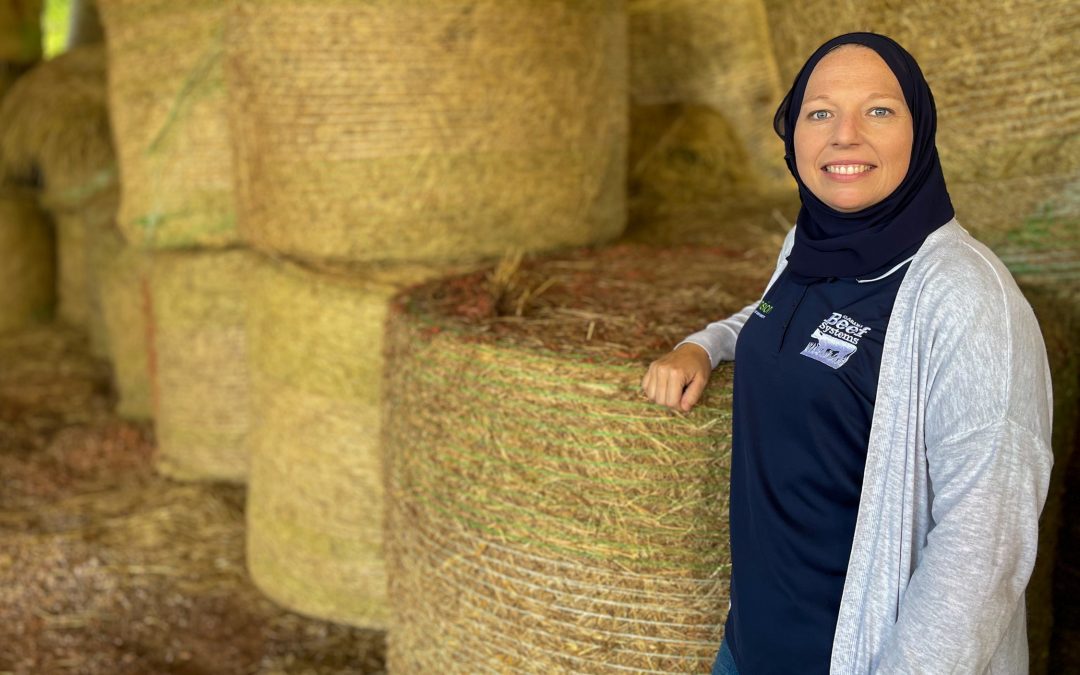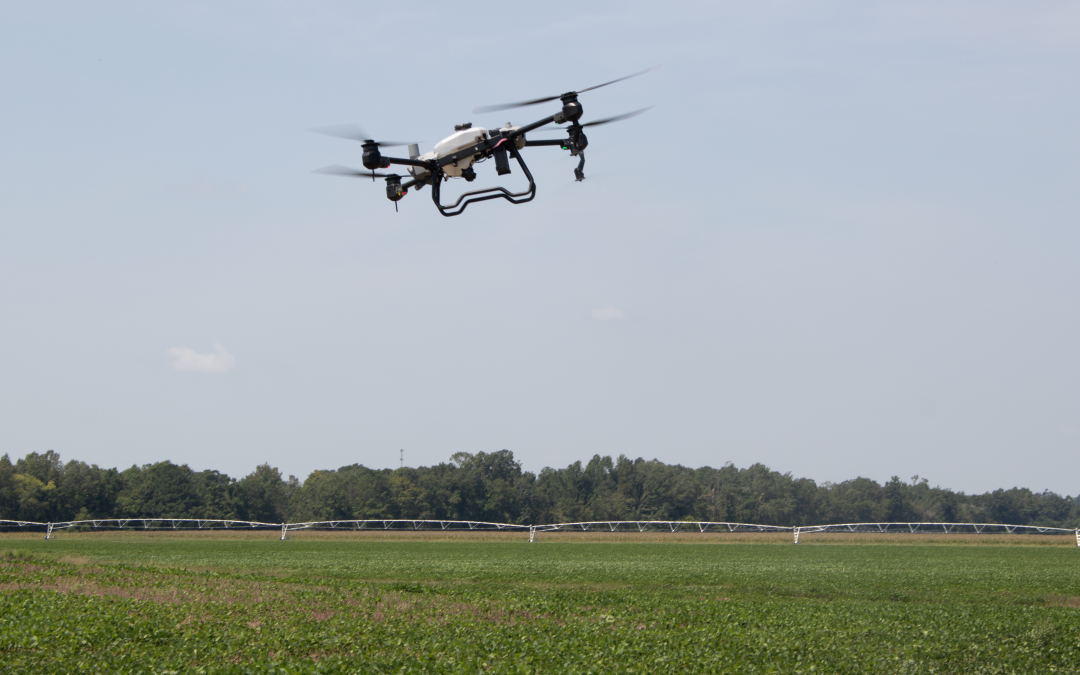By Eddie McGriff
Henderson Farms in Madison, Alabama, topped the 2016 National Corn Growers Association state contest for Alabama in the irrigated (305.7 bushels per acre) and the non-irrigated categories (232.7 bushels per acre).
Mike Henderson along with son, Chad, and nephew Stuart Sanderson accomplished the feat on heavy-red north Alabama clay soils. Chad’s son Jackson, who is still in high school, runs the grain carts and helps after school, and this summer will join the farming operation full-time after graduation.
The farmers are true students of the crop, always striving for higher yields and looking for ways to make their farming operation more efficient. Their state-winning irrigated yield was with Pioneer 2089YHR on 30-inch rows with a seeding rate of 40,000.
Uniform emergence
Chad says one of the keys to their success was an ideal stand with uniform emergence.
“Three years ago we planted by the date rather than the conditions,” he says. “The soil was wet and we had sidewall compaction. I don’t think farmers sometimes grasp how big a difference there is in plant growth and yield when they plant in less-than-ideal conditions.
“When I harvested these areas in the field, I could see it on the combine—spindly stalks and up to 40-bushels difference on the yield monitor. We want all the seeds to germinate and emerge within less of a day; 12 hours would be better.
“You want to make sure your planter is in top-notch condition and you plant in as ideal conditions as possible. Those are free bushels when you do this.” Stuart nodded his head in agreement, “We’ll wait a little longer to plant if the field conditions aren’t ideal and there isn’t a favorable weather forecast,” Chad said.
The farmers believe starter fertilizer was another key to their success but are not resting on their laurels. They will fine-tune their starter program this year. This past year they applied 3 gallons per acre in-furrow of an 8-16-11-2 with micronutrients and 7 gallons per acre of 10-34-0 2 inches deep and 2 inches beside the row. This year they will apply 10 gallons of 28-0-0-5 and five gallons of 10-34-0 with a micronutrient package in a 2 to 3 inch band on both sides of the row 2 inches deep (half of the mixture on each side of the row).
“We have a high phosphorus level in our soils so we are cutting back on the 10-34-0 and increasing our nitrogen and sulfur,” said Chad. “We feel like getting enough nitrogen and sulfur out early is important to get that seedling off to a great start, but we want to have some readily available phosphorus close to the seedling in our cooler soils in the spring.”
300 bushels on every acre
Chad says they learned the hard way that not all micronutrients would mix with starter fertilizers. He advises growers to do a jar test before mixing any micronutrients with starters.
They applied a total of 300 pounds of nitrogen to produce 305 bushels of corn, an efficiency of less than 1 pound of nitrogen per bushel of corn. They were able to improve their nitrogen efficiency by fertigating through the irrigation pivot with multiple applications of 28-0-0-5. Their last fertigation application came at tasseling.
“You can’t just throw nitrogen out and expect a yield increase,” Sanderson said. “It starts with knowing your soil so you can decide on the right nutrient program. Your soil sample results and weekly in-season tissue samplings are vital to a high yield program.”
Their weekly tissue sampling was a revelation for them. The two nutrients the tissue samples showed they were short on in their 300-bushel corn were sulfur and magnesium. Their nitrogen-to-sulfur ratio also was out of balance. A nitrogen-to-sulfur ratio of 10:1 to 15:1 is best for optimum yields and at ear leaf their nitrogen to sulfur ratio was 18:1 to 20:1, something they plan to correct in 2017.
Chad points out that they are striving to produce 300 bushels on every acre under irrigation. They irrigate by plant-water usage and by knowing their evapotranspiration.
“It is important not to let the plant stress at any stage,” said Chad. “Anytime the plant stresses you are potentially losing yield. We plan our irrigation to stay ahead of plant usage.”
Sanderson warns, “Inputs are not going down, they are steadily going up, so our only option is to increase our yields. We can do a better job of marketing our corn if we can depend on higher irrigated yields. We have the option of taking advantages of weather scares during the growing season and booking more corn.”
The adage an ounce of prevention is better than a pound of cure is their belief and fungicides are applied as insurance. They may not pay every year but they are a good policy from preventing diseases, such as Southern corn rust and Northern corn leaf blight, from becoming established and severely reducing yields. They applied Headline AMP at V7-10 and again at tasseling.
“Normally, we apply a fungicide to our dry land corn but this year it was burning up and we didn’t,” Sanderson said.
Dryland corn
Henderson Farms also won the state non-irrigated contest, recording a 232.7 bushel-per-acre yield with Pioneer 1319 and a seeding rate of 28,000 per acre. They applied only 170 pounds of nitrogen on their dry land corn and had an extremely efficient nitrogen use rate of 0.73 pounds of nitrogen per bushel of corn.
Besides reducing fertilizer use to match their yield potential on non-irrigated corn, they use the same basic production practices as their irrigated corn except weed control.
They ran a do-all in front of their planter so the ground is clean. Their dry land corn was non-GMO so they used Roundup + Dual + Leadoff at burndown and came back with Capreno at lay-by. They had more flexibility with their irrigated Roundup Ready corn. They used the same burndown program and then applied Roundup + Atrazine at preemergence and followed up with Roundup + Atrazine at V3-4.
“The key to one post-emergence herbicide application is to start clean and getting the plants to grow fast and shade out the weed,” Sanderson said. “We were fortunate that we got some timely rains after planting and got spectacular emergence and early growth. Another key to excellent weed control is having the sprayer capacity to get over your crop before the weeds get too big to control.”
Henderson and Sanderson see opportunities for increased yields. They are working with the Alabama Cooperative Extension System with replicated trials in high-yield potential fields to see if they can eliminate sulfur and magnesium deficiencies and improve yields. They have adopted the 4-H motto, “To Make the Best Better.”
Eddie McGriff is an Alabama Cooperative Extension System regional agent in northeast Alabama. He can be reached at 256-557-2375 or e-mailed at dem0029@auburn.edu.





